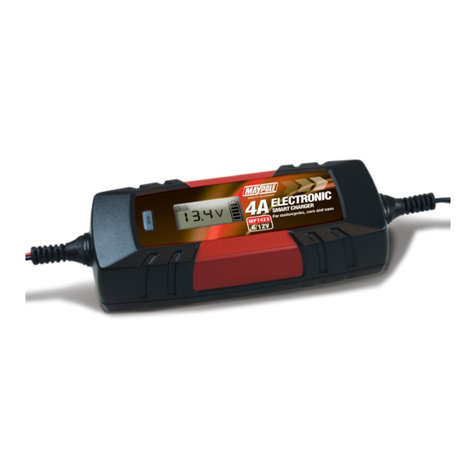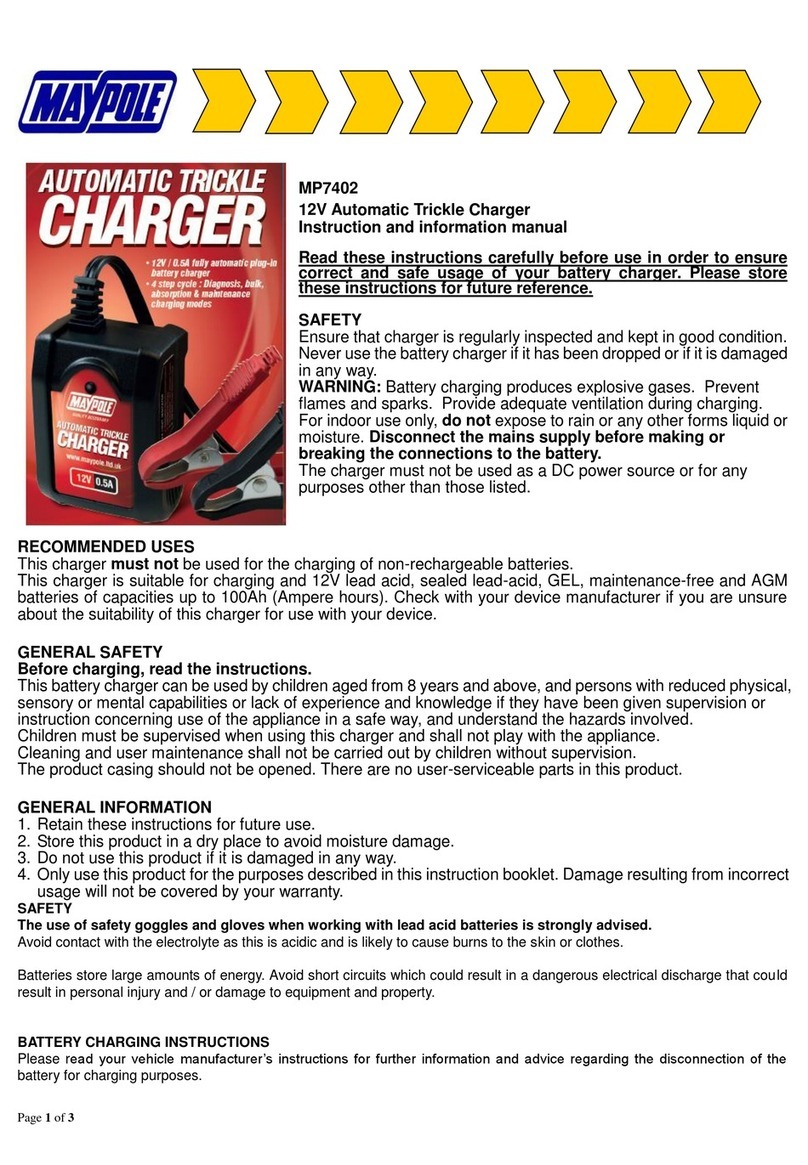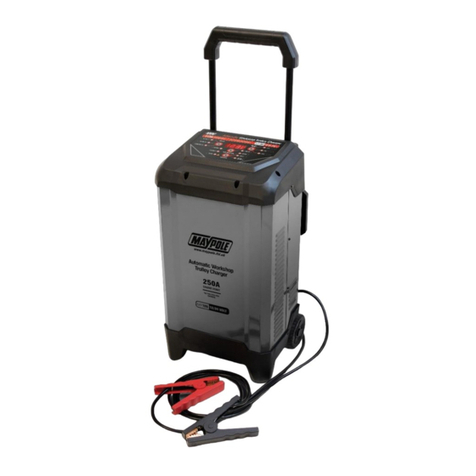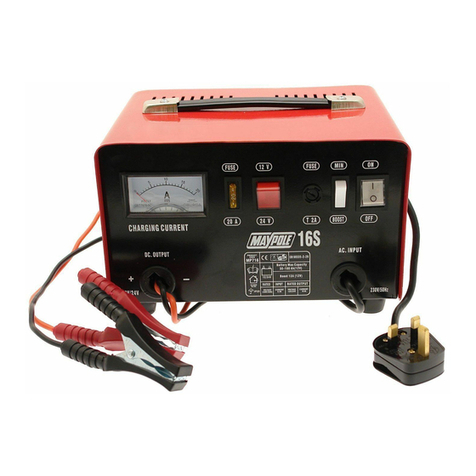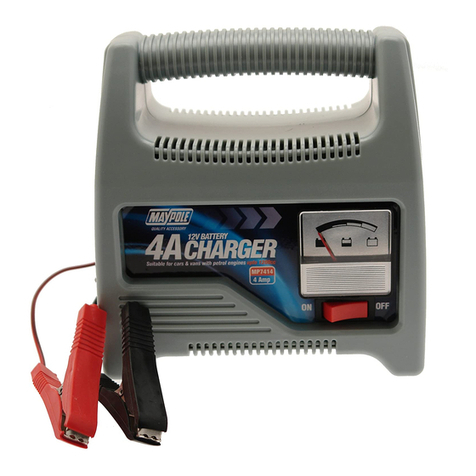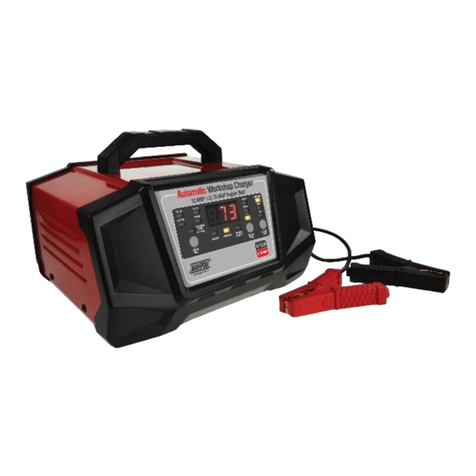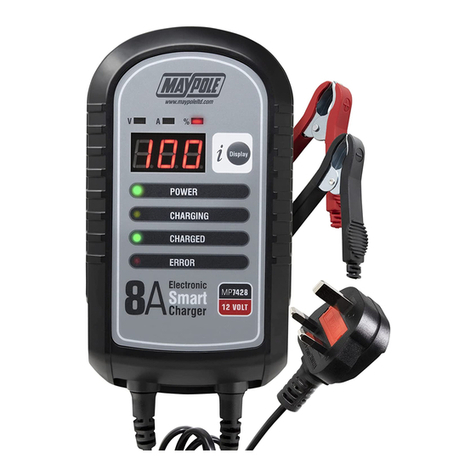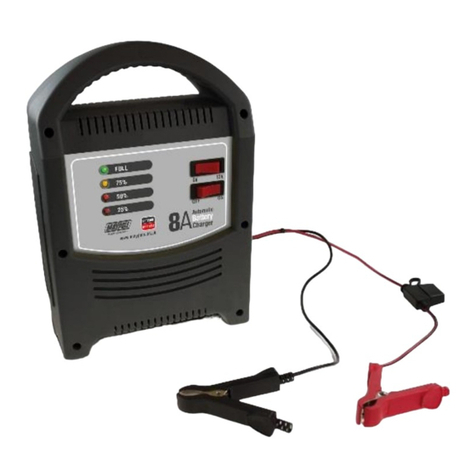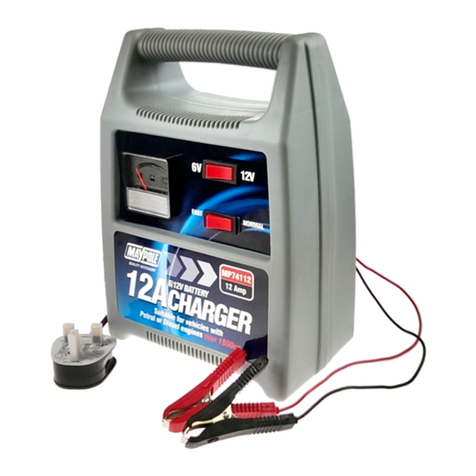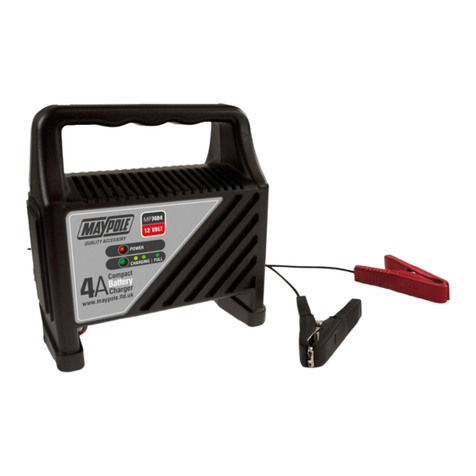
4. CHARGING.
Consider the position of the charger carefully; ensure it is used away from combustible materials.
Insert the battery charger mains plug into the mains supply (230 Volts AC only) and switch the outlet on.
WARNING! DO NOT ATTEMPT TO START THE VEHICLE WITH THE CHARGER CONNECTED. THIS
MAY BLOW THE OUTPUT FUSE OR DAMAGE YOUR BATTERY CHARGER.
Your Battery Charger should now be working and the rate of charge will be shown on the ammeter fitted on the
front of the charger. When a flat battery is initially connected to the Battery Charger the charging rate should
build up quickly. As the battery becomes more charged the rate of charge will drop, this is normal. The
charging current will never fall to zero as the charger will continue to give a small output even when the battery
is fully charged. When charging current has dropped to a low, constant level the battery is fully charged.
A charging time of no more than 10 hours is recommended, at no more than 10% of the battery’s ampere hour
capacity. i.e. 60 Ah battery should be charged at no more than 6Amps for no more than 10 hours. The battery
charger is fitted with an internal, automatic thermal protection device, if the charger overheats due to overload,
environment or for any other reason, charging will be interrupted, charging will restart automatically when the
charger has cooled down. Note: With a fully charged or faulty battery connected to the charger, virtually no
charge may register on the ammeter.
ELECTROLYTE
Regularly check the specific gravity of the liquid, using a hydrometer, until a reading of “Fully Charged” or
1,250 is reached.
5. WHEN CHARGING IS COMPLETE
Switch off the mains supply, unplug the charger and remove the charging clips, negative (-ve / black) first.
Inspect the liquid levels in each cell and top up if applicable / necessary, using the correct fluid. Now push
home or tighten the caps. Any surplus fluid around the cell tops should be wiped off (this should be done with
extreme care as it is acidic). If the battery has been removed for charging, replace it and re-connect the
cables.
FAULTY BATTERY CELLS / GENERAL BATTERY CARE
Batteries are usually made with six cells. One of these cells can deteriorate or get damaged. If after several
hours charging your battery is still flat, you should test the battery. For non-sealed lead acid batteries; using a
hydrometer (which can be purchased from most motor accessory stores), take readings from each cell by
sucking up a small amount of electrolyte to check the specific gravity and condition of the cell. Put the fluid
back into the cell after testing, taking care not to splash the fluid about.
If one reading is lower than the others, this could indicate a faulty cell. The battery will require replacement if
one or more cells are faulty. ALWAYS WASH OUT THE HYDROMETER AFTER USE.
For standard lead acid batteries, but not maintenance free, it is essential to keep the electrolyte level above the
plates. NOTE, however that you should not overfill the battery, as the electrolyte is strongly acidic.
DO NOT USE TAP WATER. Always use distilled or ionised water. If necessary have it checked by your
garage.
It is also important to maintain the battery leads on a regular basis as loose or dirty connections on your battery
terminals may prevent the vehicle from starting. Do this by removing the leads from the battery, cleaning the
inside of each connector and the terminal posts on the battery. Smear the terminal posts with grease, replace
the connectors and tighten firmly.
